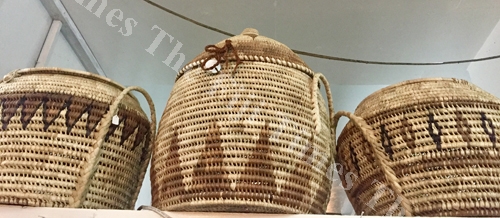THE Pacific did more with bamboo in the past that what it is doing currently and at this time when the technologies have advanced dramatically and when almost every country of the tropics has realised the incredible potential of this giant grass.
These were the sentiments echoed by Conservator of Forests, Fiji representative Sanjana Lal in the Talanoa Session Report that was held in August.
“The Pacific Islands Development Forum (PIDF) secretary general Francois Martel called this plant the new green gold.
Considering the potential — currently the value of trade in bamboo is estimated at $US60 billion ($F127.2b) annually — and its versatility, I have to agree.
“This green gold has been staring us in the face for too long now and it is time to harness it,” Ms Lal said.
“We need to take this issue of bamboo propagation and utilisation seriously.
“We cannot continue implementing ad hoc activities or some time-bound projects that come to an end after a few years and everything folds up with it.”
Ms Lal said the talanoa session was an opportunity to set the scene for bamboo development in Fiji and the Pacific Islands including innovations, products and services for community development and resilience.
“This is not something new to us. We have tried to develop this resource but not rigorously pursued it.
“We have had some trainings and capacity building in the propagation and utilisation of bamboo but we need to seriously implement programs in the various sectors and take ownership towards completion.”
Bamboo industry’s early days
In providing a brief history, Ms Lal said bamboo development in the Fiji forest sector started with a project in Vunidawa, Naitasiri in the late 1970s with funding from the People’s Republic of China to explore the utilisation of the local bamboo species.
“The project however was not successful due to lack of appropriate technology, interest and financial support,” Ms Lal said.
“In spite of this the Bamboo Association was formed in 1998 to revive the bamboo industry and to encourage the use of bamboo in Fiji.”
The Ministry of Forests in 2000 brought 12 different bamboo cultivators from Australia for research experimental plantings and for product development research but again, interest dwindled over the years and did not attain what was anticipated.
“Even with numerous training locally and in China, the use of bamboo as an alternative material for building and handicrafts is quite low and insignificant,” she said.
Way forward
“We hope that with the recent signing of a memorandum of understanding (MOU) between the Ministry and State Forestry Administration of the People’s Republic of China, we will revive bamboo projects and this time around, have the success we have hoped for,” Ms Lal said.
Ms Lal said the development of a bamboo industry and the establishment of a bamboo centre in Fiji were in line with the mission of the Ministry of Forests and Fiji’s Development Plan.
“The government had already identified this plant’s potential to alleviate poverty in Fiji.
“At a side event during COP 23 in Bonn, Germany last November, government representatives and members from international organisations including Fiji shared the various uses of bamboo putting up a strong case for the imperative need for greater utilisation of bamboo and innovation to address some pressing challenges including climate change action and livelihoods support.”
Mr Martel, who was a panellist to this side event, championed the need for more island states in the Pacific to join International Bamboo and Rattan network (INBAR) and benefit from bamboo, emphasising it as an incredible resource in the Green Economy and how its versatility could offer
Pacific people sustainable solutions to their needs.




